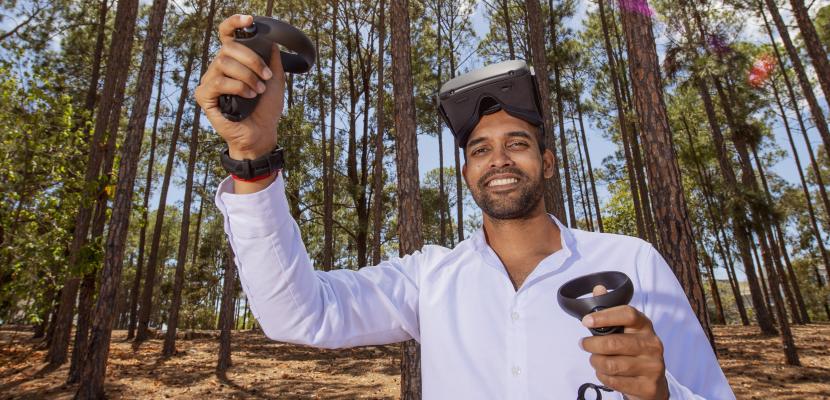
Gold Coasters will get the chance to go inside the catastrophic threat posed to the Glitter Strip’s iconic beaches and towering skyline by climate change, thanks to a new virtual reality experience being described by its creator as a “time machine”.
Aftermath is the brainchild of Vipin Dhunnoo, a sustainable environments and planning and project management student at Bond University.
Hailing from Mauritius, where he has worked as an architect, Mr Dhunnoo said his concerns about climate change were reinforced whenever he returned to the small island nation.
“One of the things I noticed upon coming here (Australia) (is) many people don’t realise what’s really happening, and when I go back home from my studies, I see the beach and the coastline has really receded.”
Mr Dhunnoo said Aftermath, which is being developed on the Oculus Quest headset, drew on his experience both as an architect and from working on games for the past few years.
“The idea is like a time machine – to take you to the aftermath of climate change; for people to experience the effects we’re causing now, using our current behaviours. They would be transported into a world where sea level has taken its toll on coastal regions, and there’ll be things that were there to adapt to sea level rise but unfortunately failed, like sea walls.”
Aftermath would also highlight other likely environmental outcomes of climate change, such as submerged landmarks and road signs, and people living in housing that had been adapted to survive rising sea levels.
The first version of Aftermath will be based on an island environment similar to Mauritius, but Mr Dhunnoo was hopeful that if it was well received, he could develop a scenario for the Gold Coast.
Oculus was developing finger interaction, which allowed the headset wearer to use controllers to interact with the virtual reality environment. Mr Dhunnoo said Aftermath would include interactive components that allowed users to be educated about climate change while inside the virtual world.
He also wanted Aftermath to make people understand that consumerist behaviours and the use and overuse of plastics represented a significant risk to the future of the planet.
Mr Dhunnoo hopes to have the final version of Aftermath available for use in schools, universities and museums, to target the next generation of world leaders and decision makers.
“VR is one of the technologies that really has the potential to change things. Studies have been done by universities that show once you experience something first-hand … you’re more likely to become part of the change, or change your behaviours as a result.
“I think it will be more meaningful if it’s deployed in institutions – schools probably, and museums. There’s only so much I can do as one person, but I’m trying to spread the message in a way that people can relate to.”
Aftermath recently received a boost of $3000 in funding from Bond University’s Transformer Launch Pad competition.
Mr Dhunnoo said the money would go towards developing the Aftermath app, as well as another virtual reality headset to trial the product on.